
GUEST BLOGGER: CARRIE PEARSON
I found the power of love with Stretch to the Sun: From a Tiny Sprout to the Tallest Tree on Earth, a narrative nonfiction picture book about the tallest tree on earth and its ecosystem. For over 1200 years, this giant coast redwood has survived enormous natural challenges but its biggest adversaries — and saviors — were people.
The love
Is it odd to love a tree? I don’t think so. I don’t love trees in the same way I love my family, friends, and dog, but the delight I feel in a forest is akin to one of Oxford’s definitions of love which is “a great interest and pleasure in something.” When we love something, we are invested in its safety and happiness.
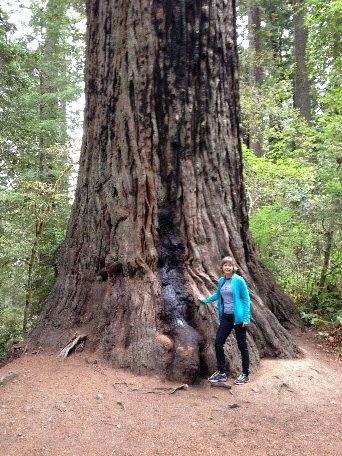
What does love have to do with STEM and language arts? I believe love for trees, in particular a very special tree, compelled me to write a story that would drop readers into a world most had never seen or even dreamed of — and hold them there. Hopefully, for my readers, that story would spark love and an investment in nature.
To accomplish this
goal, I needed engagement in the form of visual verbs, descriptive adjectives,
and sensory connections. Finding those
words meant spending time in the world of the ecosystem. It meant touching, smelling, watching,
and listening to a coast redwood forest.
Not every student can experience ancient coast redwoods, but every student can be awakened to the life of one tree. One tree could spark love. One tree might fuel ecoliteracy, build empathy, and lead to protecting ecosystems we are in danger of losing forever.
Find the love – pre-reading exploration
- Before reading Stretch to the Sun together, teachers are encouraged to download and explore the free Discussion and Activity Guide and book trailer.
- Examine the book cover and notice the creatures. Discuss that many animals, bugs, and birds live on and in trees. Consider how a home in a tree might be the same or different than a person’s home.
- Discuss the definition of “biography” — a life-story of a person. Show covers of biographies and name the people who are the subjects of those books. Compare and contrast a biography of a person to Stretch to the Sun. Share that the author calls this story a “tree-ography” – a unique life-story.
- Point out the large font onomatopoeia words in the book. Discuss the important role of onomatopoeia as a craft move to bring sensory words into stories. Invite students to read these words aloud as you read the book.
Find the love – read the book together
- Modulate your voice to match the sound words on the page and encourage students to read the onomatopoeia words with inflection.
- Refer back to the cover and notice how, as the tree grows taller, more creatures are shown. Discuss how coast redwoods serve as the only home for the endangered Marbled Murrelet bird and by protecting this home, we are protecting this species.
- Consider the detailed, sensory-stimulating art by talented illustrator, Susan Swan. How might the bark of the tree feel? What might the damp duff smell like? Can readers hear the buzz of the bees in their imaginations?
Find the love with post-reading discussion and activities
Find active words (vivid verbs, descriptive adjectives and sensory words) the author used as a craft move to pull a reader into the story. Create a word cloud or a Seek and Find chart.
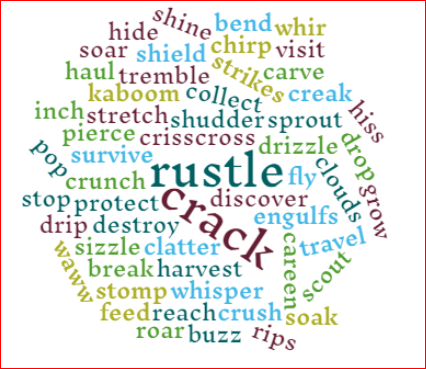
Stretch to the Sun: Seek and Find Active Verbs Chart
| What is happening on the page | Active Words (vivid verbs, descriptive adjectives, sensory words) |
| winter, cold, snow, animals | ferocious, blow forest |
| tree falling | clatter, break, careen, giant, redwood, bends, force, creak, crack, kaboom, giant falls, broken, trembles, clods, chunks, fly |
Project-based-learning idea: Love a tree!
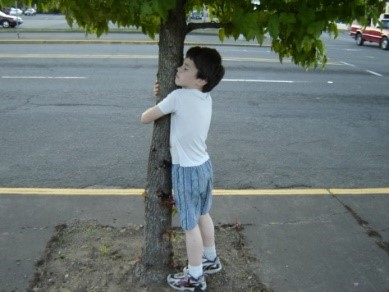
- Each student identifies a tree he/she sees almost daily. It’s best if they can interact with the tree through all five (okay, maybe four!) senses. Create space in a science journal or start a new Love A Tree Journal to write and draw about their tree during the school year.
- Learn About Their Tree: using online or library resources, students identify the species of their tree. Is it deciduous or evergreen? What creatures might use it for their home? Compare/contrast/connect what this tree needs to live and what humans need to live.
- Appreciate Their Tree: use senses to explore their tree in person. Describe it using active words. Draw and label parts of their tree. What is special about it? What creatures have they seen in/on it? How do trees help our planet?
- Love Their Tree: describe their feelings about their tree. How have their feelings changed since they first met their tree?
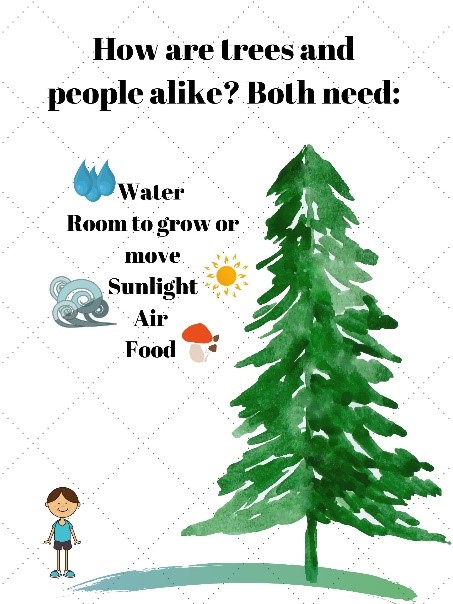
Extensions I love
- Ask students to create an illustrated tree-ography about their tree to share
- Explore the role coast redwoods play as an important source of carbon sequestering

Carrie Pearson holds a BA in early childhood education from the University of Michigan and taught at the University’s preschool. She is now a full-time children’s book author, SCBWI Regional Advisor, and recipient of the Michigan Reading Association’s Gwen Frostic Award for Literacy. She is the author of three nature-themed picture books with more true stories coming soon. When she isn’t in the woods or on the water, Carrie would love to connect with you through her website www.carriepearsonbooks.com, on Twitter @carrieapearson, Pinterest carrieapearson, and/or Instagram carrieapearson.author.


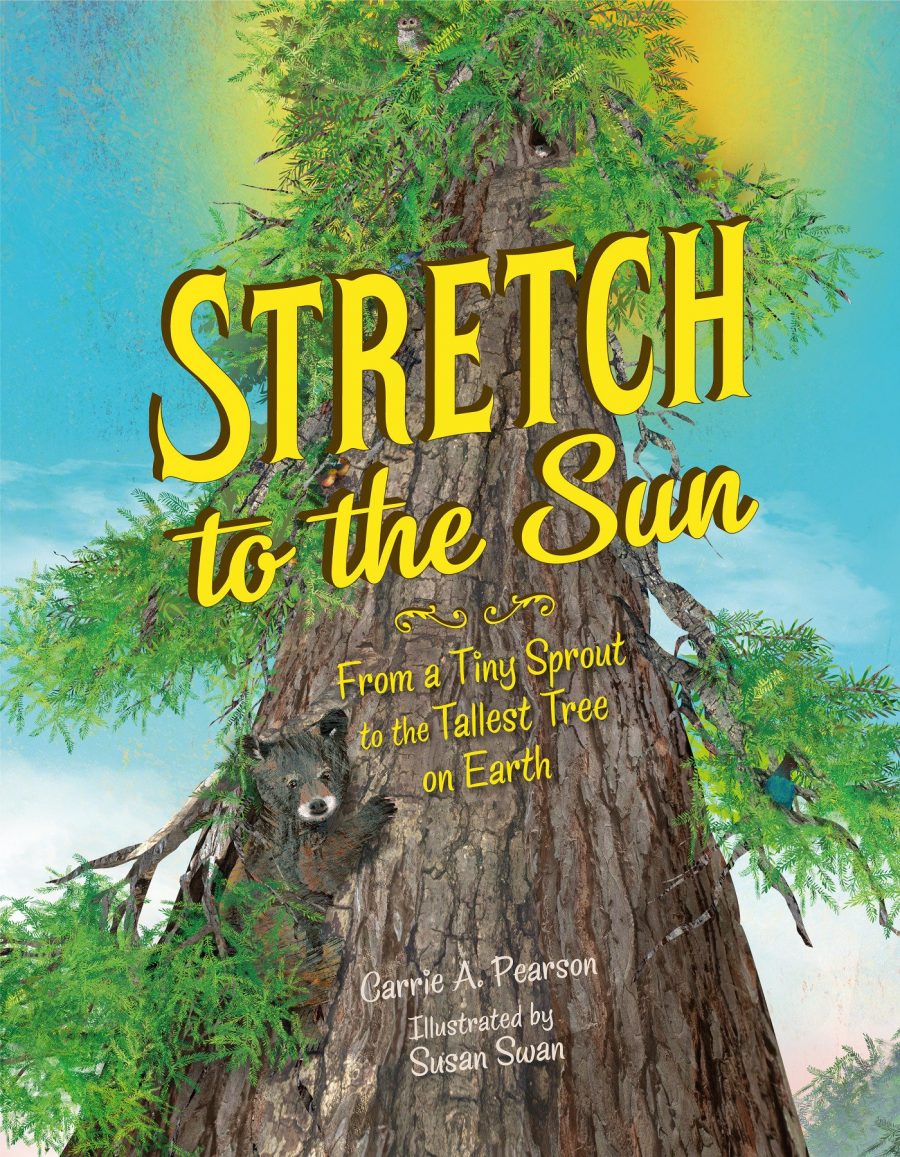
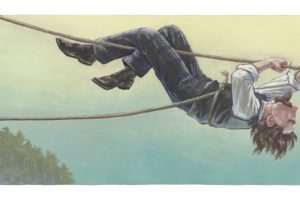

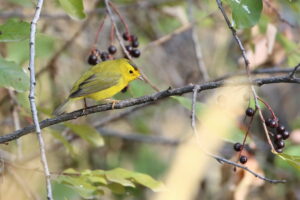


Leave a Reply
Your email is safe with me.